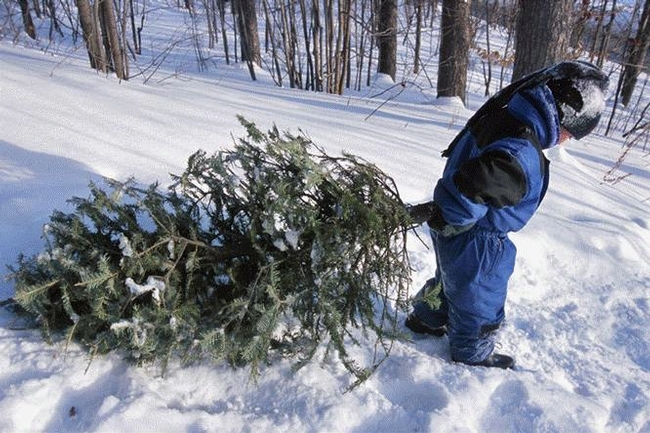California forests are overstocked with conifers, and California residents want to decorate their homes during the holiday season with Christmas trees. The smart harvest of Christmas trees can kill two birds with one stone, according to UC Cooperative Extension forestry advisor Susie Kocher. Kocher spoke to Capital Public Radio reporter Ezra David Romero about the prospect of thinning the forest by taking home trees.
"It's a great win-win solution," Kocher said. "You get the public out in the forest, you do good work reducing the density of trees."
Kocher, who lives in Lake Tahoe, holds a family Christmas tree harvest party every year. With $10 permits from the Lake Tahoe Basin Management Unit, they trek through snow to select their trees. This year the management unit sold 2,000 permits. Kocher believes the program could be ramped up to further benefit forests.
“By removing some of the smaller trees, we are doing some of the work,” Kocher said. If left in place, the small trees grow larger, and more human resources, equipment and funds are needed to remove them. Moreover, the income from permit sales can be used for other forest-thinning projects.
However, some foresters are skeptical that harvesting Christmas trees is a realistic solution to management of California forests.
“It's great to have the masses come up during the holiday season full of mirth and cheer,” said Joseph Flannery with the Tahoe National Forest. “But I don't think there's the infrastructure in place to really make a dent in the hazardous fuels reduction needed.”
This story was also covered for KTVU Fox Channel 2 in the Bay Area by Lisa Fernandez.
“You need a 4-wheel drive, and yes, you trudge through snow,” Kocher said. “It's not for everyone. But for those who want that adventure, it's super fun. I do it because I don't think there's a substitute for a real tree in the house. And we always turn it into a family party.”
Besides, she said, “I feel good about removing excess small trees.”
